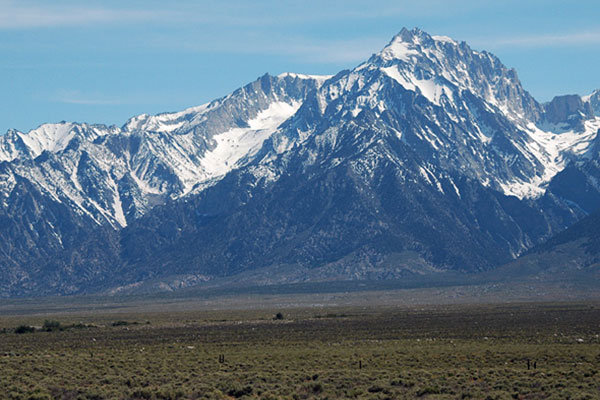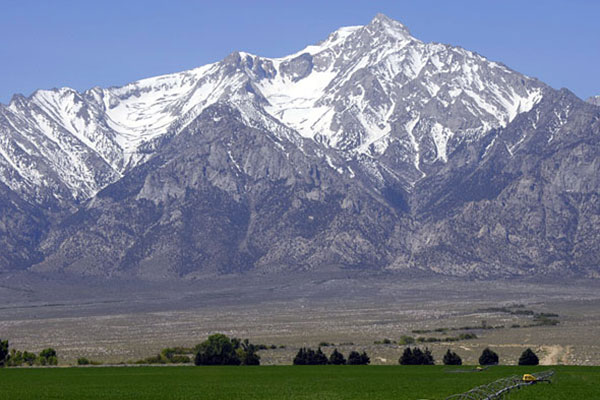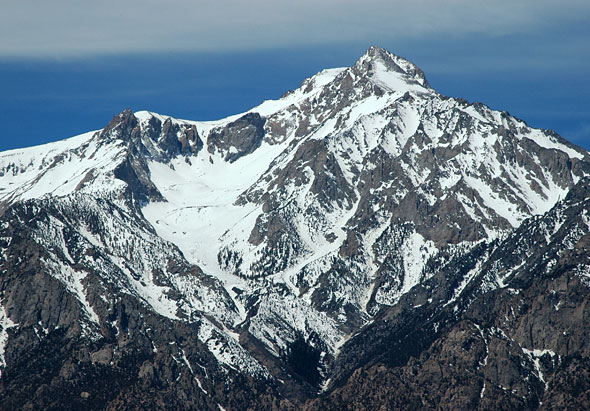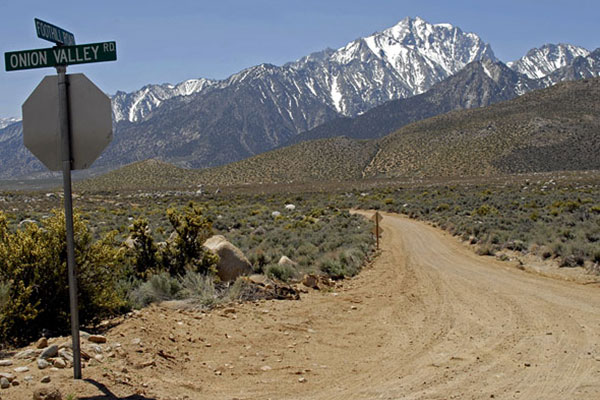Post and Photo credit sierradescents.com
Backcountry Skiing Mount Williamson California
Foothill Road crosses the north fork of Bairs Creek at an elevation of 5906
Climbing Williamson is as pure as it gets. Park at the bottom of the mountain. Hike up. With a trail, via Shepherd Pass, most backcountry travelers will find the most strenuous climb of their lives.
Without a trail, as is the case of the George Creek and Bairs Creek approaches, the climb becomes something else entirely, a transcendent experience
Getting There From Bishop
The Bairs Creek approach
the north ridge, as potentially the best of the bunch. The idea in this case is to traverse high above the creek and cliffs, finding (eventually) a hidden notch that permits access back down into the upper drainage.
In 50 Backcountry Ski Summits, Paul Richins calls this notch 'obvious.'
My experience suggests there are many prominent notches in the area, none of which is the right one.
The best strategy is probably to go by elevation. Around 7200', leave the right side of the ridgeline and start traversing left across steep, seemingly-cliffed terrain.
If you're lucky, you'll stumble upon a faint game trail heading toward the correct notch, which makes travel across the steep slope somewhat easier.
You'll enjoy occasional glimpses of Williamson's twin horns, high above, as well as the enticing upper snowfields of the Bairs Creek Cirque.
To the east, the panorama of the Sierra, the Owens Valley, the White Mountains, and the Inyo Mountains gradually unfolds.
sage-choked flats at the bottom of the Bairs Creek Cirque. After climbing over 4000 total vertical feet, I've reached camp.
elevation is around 9500' 5000 vertical feet below the summit.

climbing skins begin to lose their grip on the frozen snow.
Ski crampons would help. the headwall of the Cirque, elevation 12,000 feet
In contrast to Langley's massive Northeast Couloir, Williamson's Bairs Creek Cirque and summit plateau make for a very different experience. The variety of scenery and terrain, and the effort required to traverse it, make this descent stand out even among giants. The problem comes when you consider this massive route and mountain only from a skier's point of view.
This is a ski mountaineer's peak, as Paul Richins Jr. calls it, a place where skiing is only a distant part of the equation. If that formula works for you, you'll find no Sierra descent to equal it.
18,000 vertical feet


